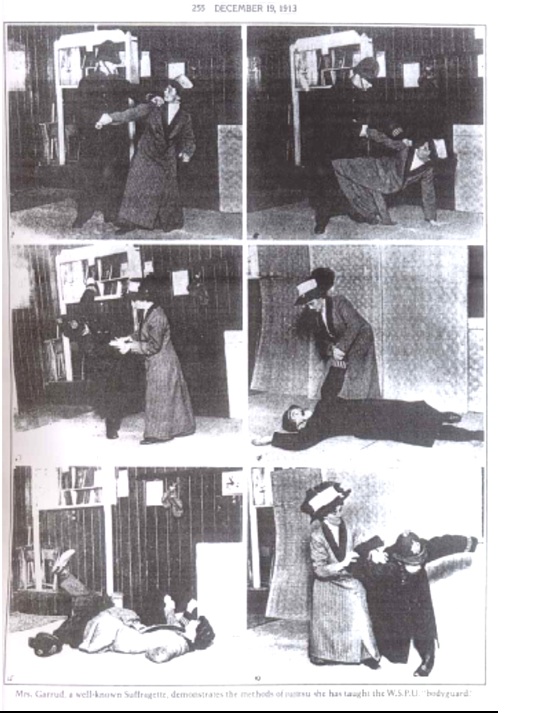A brief account of some of the many violent incidents in the UK women’s fight for the right to vote in the early 20th century, by Steven Johns.

Liberal accounts of the women’s suffrage movement in the UK (often now referred to as the originally pejorative term “suffragettes”) often ignore or downplay its violence.
While many do refer to the breaking of windows, many other more violent episodes are ignored. However at the time suffragette violence had a very high profile and its “outrages” were reported on and condemned in the press at the time in much the same way as Irish Republican terrorism.
This is not a definitive history, as unfortunately I do not have the time to compile one at this point, this is merely a snapshot of a few of these actions that went beyond protest or window-smashing.
Sabotage
Communications networks were disrupted by cutting telephone and telegraph wires and burning post boxes. In September 1912, 23 trunk telegraph wires were cut on the London road at Potters bar, and on 28 November later that year, coordinated attacks took place on post boxes around the country. The following year, four postmen were injured by phosphorus left in post boxes and 20 telegraph wires were cut in Dumbarton.
Vandalism
Many culturally significant objects were attacked, like paintings, statues, and even the jewel house of the Tower of London. Glasgow Art Gallery had its glass cases smashed in 1912, and in 1914 mummy cases were defaced in the British Museum and Velázquez's Rokeby Venus was slashed in the National Gallery. At Kew Gardens in London, and an orchid house was attacked and its tea room was burned down.
Arson
Arson attacks took place on theatres, sporting pavilions and the Houses of Parliament politicians. In Dublin in 1912, four suffragists, including Mary Leigh, attempted to set fire to the Theatre Royal while Prime Minister Herbert Asquith was attending a packed show. After the death of Emily Davidson in 1913 who threw herself in front of the King’s horse, Kitty Marion and Clara Givens burned down the pavilion of the Hurst Park racecourse in retaliation.
Bombings
Bombs and incendiary devices were detonated at banks, railway stations, churches and even Westminster Abbey. Saunderton railway station and Croxley station near Watford were destroyed, and Kitty Marion destroyed a train near Teddington on 26 April, 1913. On May 21, a bomb exploded at the Royal Astronomical Observatory in Edinburgh, and that summer a bomb was planted outside the Bank of England.
In November, 1913, a 3 inch pipe bomb exploded in the Glass House of Alexandra Park in Manchester. No one was convicted of the attack but the perpetrator was probably Kitty Marion. Another bomb damage the home of Chancellor David Lloyd George.
Physical attacks
Physical attacks also took place against politicians. One activist attacked Winston Churchill with a horsewhip. That same month, Selina Martin and Leslie Hall disguised themselves as orange sellers and attacked the Prime Minister’s car with catapults.
In 1913 some suffragists plotted to kidnap the Home Secretary, Reginald McKenna, and it was reported that a plot was uncovered to kidnap Cabinet ministers and subject them to force-feeding. Private detectives were hired as a result to protect the ministers.
In 1914 27-year-old suffragette Rhoda Fleming leap on the footboard of the king and queen's limousine in Perth, Scotland and tried to break its windows. The attempt was described in the press as "perhaps the most daring that has occurred in the history of the women's suffrage agitation".
Martial arts
We have not yet made ourselves a match for the police, and we have got to do it. The police know jiu-jitsu. I advise you to learn jiu-jitsu. Women should practice it as well as men... It is no use pretending. We have got to fight.
- Sylvia Pankhurst
Edith Garrud, a women's rights advocate who had studied jiu-jitsu opened a dojo in East London in order to train suffragists in the martial art to defend themselves from police. She often used an assistant dressed as a policeman for her classes. In particular, she trained a unit of 25 women - the Bodyguard - to defend Emmeline Pankhurst from arrest.

At a meeting in Glasgow on March 9, 1914, for example, police attempting to storm the hall found themselves hit with a barrage of flowerpots, tables, chairs and other objects which had been hurled at them, and they found barbed wire had been concealed in garlands bedecking the stage. Audience members and bodyguards also engaged in hand-to-hand combat with officers arming themselves with clubs, batons, poles, planks and even a revolver firing blanks to scare them.
Military training
That same year a suffragette paramilitary force, called the People’s Training Corps, was set up in Bow, east London, with the stated intention of developing to the point where they could proceed to Downing Street and imprison ministers until they conceded votes for women. As part of the training armed drills took place in Victoria Park. Elsewhere, it was reported that two women had been observed practising shooting revolvers.
On pacifism
So next time you hear a liberal (or a conservative, for that matter) criticise violent protesters, or violent strikers, ask them what they think of the suffragettes. As they knew that those in charge will never give up any of their power without a fight.
Sources
- The Weaker Sex? Violence and the Suffragette Movement - Fern Riddell - History Today Volume 65 Issue 3 March 2015.
- The Daily Telegraph, 12 June 1914
- Were the suffragettes regarded as terrorists? - retrieved 06/10/17
- The Glasgow Herald', 11 July 1914 - retrieved 09/07/17
- The Martial Chronicles: Fighting like a Girl 2: The Jujitsu Suffragettes - retrieved 23/07/17
- New York Times, August 12th, 1913 .





Comments
Quote: The dominant (and
- from this text: http://dialectical-delinquents.com/articles/culture/the-closed-window-onto-another-life/